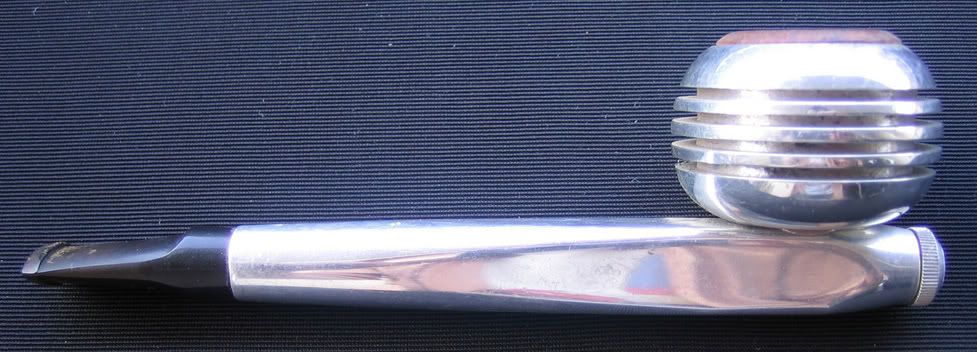eightbore
Suspended
- Messages
- 165
- Location
- North of 60
Very sorry to hear about your father. However, it sounds like you have a very healthy attitude about his passing. I just buried my grandmother (never had a vice in her 86 years) and her quality of life over the last decade was not the best either due to alzheimers and heart disease. It seems we risk our necks when we walk out the door these days. [huh]
As for general comments regarding recent studies (and I write this with the firm belief that there exist three types of lies.....lies, damnable lies, and statistics) I think finer distinctions need to be made. Example: Most studies don't generally make distinctions between inhalers and non inhalers. Historically, my guess is pipe inahalation was a major exception to the rule. As more people have moved from cigarettes to the pipe however (trying to quit, perception of it being better for you, etc.), inhalation habits were probably maintained. That might account for increased mortality and lung cancer rates among pipe smokers now inhaling in greater proportion. Further, the move of many from cigs to the pipe has likely changed the socio-economic features of the average pipe smoker effectively thus reducing the groups general access to preventative health care. It might also be interesting to know how this changing socio-economic composition of the population has impacted the relative mortality rates in concert with the simultaneous degradation of access to health care in the US over the last 25 years. hmmmm.....
I would be interested to know two things about the study you cite: 1) What was the life span differential...5 years, 1 year, two months? and 2) Was the difference statistically significant at an acceptable level ... 95%? 99%? only 90%? In other words, can we beleive the results or is there a decent chance the results are capturing random variation? Anyway, aside from all the methodological issues that will exist in any study, if one really wanted to have an impact upon mortality in America and thus reduce general health insurance costs, it might be a good idea to target obesity and fast food LONG before going after the pipe smokers. lol
lol  Further, Burger King counter folks are usually much less friendly than my pusher... err....tobbaconist.
Further, Burger King counter folks are usually much less friendly than my pusher... err....tobbaconist.  lol
lol 
As for second hand smoke, and to be totally frank, I'll start worrying about my second hand smoke on public streets when drivers of big SUVs start worrying about their diesel exhaust. Any scientist who thinks he can measure the cumulative impact of completely unpredictable and unmeasurable exposures to second hand smoke is now a theologian as he is really asking how many theoretical angels can dance on the head of a statistical pin.
Best Regards,
eightbore
As for general comments regarding recent studies (and I write this with the firm belief that there exist three types of lies.....lies, damnable lies, and statistics) I think finer distinctions need to be made. Example: Most studies don't generally make distinctions between inhalers and non inhalers. Historically, my guess is pipe inahalation was a major exception to the rule. As more people have moved from cigarettes to the pipe however (trying to quit, perception of it being better for you, etc.), inhalation habits were probably maintained. That might account for increased mortality and lung cancer rates among pipe smokers now inhaling in greater proportion. Further, the move of many from cigs to the pipe has likely changed the socio-economic features of the average pipe smoker effectively thus reducing the groups general access to preventative health care. It might also be interesting to know how this changing socio-economic composition of the population has impacted the relative mortality rates in concert with the simultaneous degradation of access to health care in the US over the last 25 years. hmmmm.....
I would be interested to know two things about the study you cite: 1) What was the life span differential...5 years, 1 year, two months? and 2) Was the difference statistically significant at an acceptable level ... 95%? 99%? only 90%? In other words, can we beleive the results or is there a decent chance the results are capturing random variation? Anyway, aside from all the methodological issues that will exist in any study, if one really wanted to have an impact upon mortality in America and thus reduce general health insurance costs, it might be a good idea to target obesity and fast food LONG before going after the pipe smokers.
As for second hand smoke, and to be totally frank, I'll start worrying about my second hand smoke on public streets when drivers of big SUVs start worrying about their diesel exhaust. Any scientist who thinks he can measure the cumulative impact of completely unpredictable and unmeasurable exposures to second hand smoke is now a theologian as he is really asking how many theoretical angels can dance on the head of a statistical pin.
Best Regards,
eightbore




